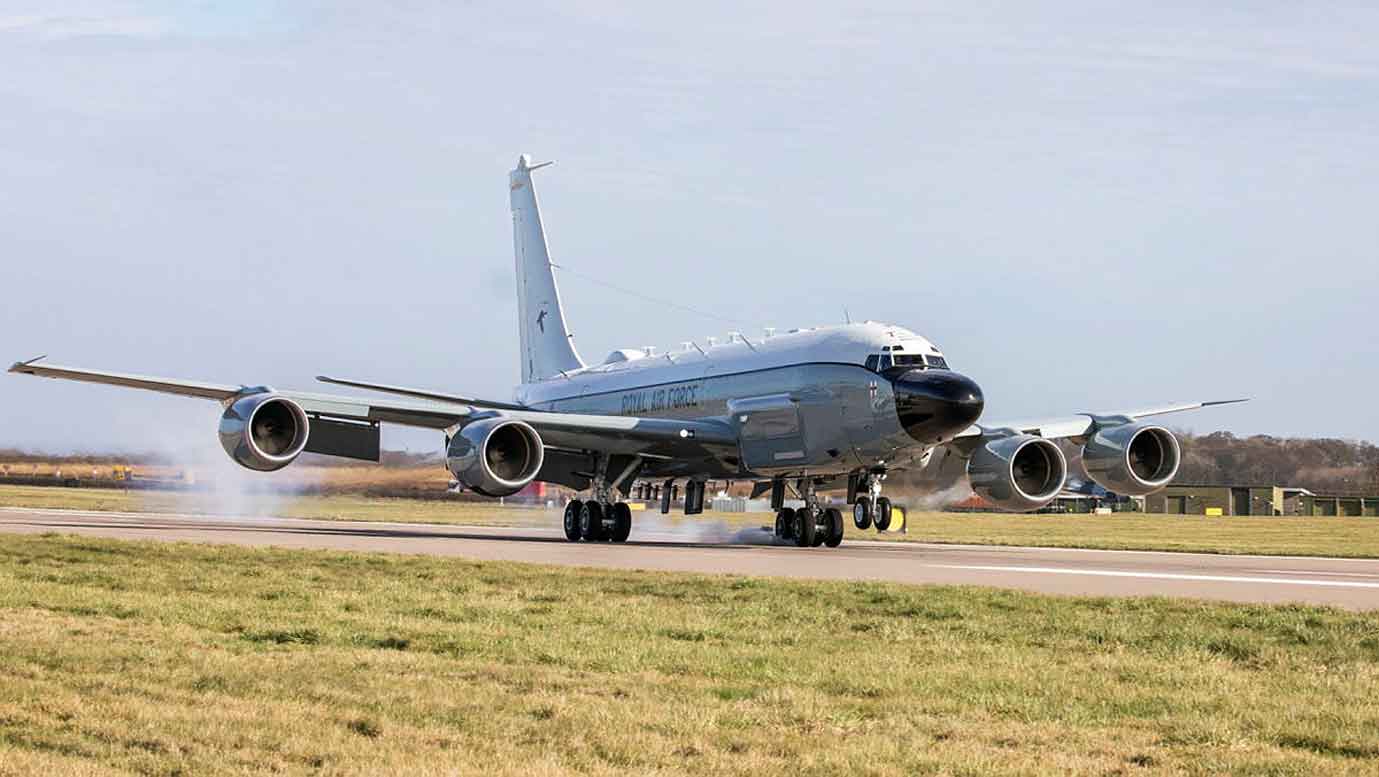UK and US Extend Co-operation On Electronic Surveillance Aircraft
UK RC-135W Rivet Joint aircraft used against Daesh to benefit from extended support by US DoD.
27 October 2021

In a deal worth £970 million, the UK's RC-135W Rivet Joint electronic surveillance aircraft will benefit from an extension to support arrangements with the US government until 2035.
To ensure the aircraft continue to receive support until 2035, the existing Memorandum of Understanding with the US was extended following negotiations between the US Department of Defense and the UK MOD. Under the new MOU, the MOD have committed to investing £970 million in the programme over the next 14 years.
Widely known as RC-135W Rivet Joint in the service, Airseeker is a dedicated electronic surveillance aircraft that deploys in all theatres on strategic and tactical missions. The agreement will continue to benefit from maintenance, spare parts, engineering support, technical data and access to capability updates.
Airseeker support is provided by the unique venture between the United States Air Force and the UK Ministry of Defence – known as the Rivet Joint Cooperative Programme – which was due to expire in 2025 and will now continue until the UK out of service date in 2035.
The RAF's No. 51 Squadron received its first Rivet Joint on November 12, 2013, operating its maiden operational sortie on May 23, 2014. The second aircraft arrived in August 2015 and the third in June 2017. For the purposes of sensor and system upgrades, the trio are considered an extension of the USAF Rivet Joint fleet, ensuring they remain at the cutting edge of capability.
“The Rivet Joint Cooperative Programme is a fantastic example of the UK/US special relationship and the support for our Airseeker fleet has been extended for a further decade,” stated Defence Minister Jeremy Quin.“With a commitment to invest almost £1 billion, this agreement will ensure that we, and our allies, can benefit from the aircraft’s impressive surveillance capability for years to come.”
Operationally proven across the world, including in counter-Daesh missions (Operation Shader) in the Middle East, Airseeker uses sensors to detect, identify and geolocate signals throughout the electromagnetic spectrum. The mission crew can then forward gathered information in a variety of formats to a wide range of consumers via Rivet Joint's extensive communications suite.
The aircraft are operated out of RAF Waddington by the Royal Air Force's 51 Squadron as part of the Intelligence, Surveillance, Target Acquisition and Reconnaissance (ISTAR) Force led by the ISTAR Force Commander, Air Commodore Nick Hay.
“This is an important step in reinforcing both nations’ commitment to exploit cutting-edge technologies on intelligence operations from both the UK and overseas out to 2035," said ISTAR Force Commander, Air Commodore Nick Hay.
Airseeker/RC-135W Rivet Joint
|
Length |
135 ft (41.10m) |
|
Height |
42 ft (12.80m) |
|
Wingspan |
131 ft (39.90m) |
|
Max airspeed |
470 kts (870kmh) |
|
Range |
3,900 miles (6,500km) |